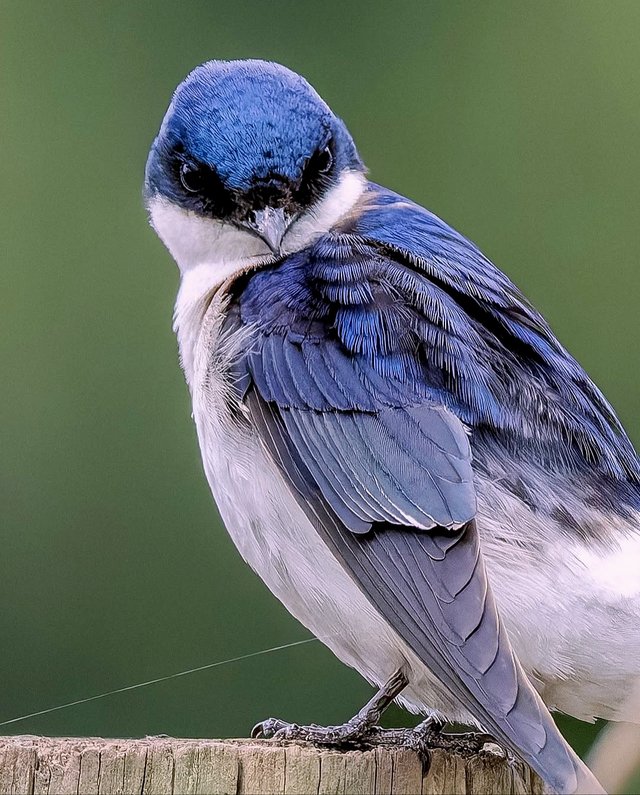So Cute Tree Swallow
Tree Swallow: A Graceful Aerial Acrobat of North America
The tree swallow is a small, elegant songbird that belongs to the family Hirundinidae. Recognized for its iridescent blue-green plumage and impressive flight skills, the tree swallow is a favorite among birdwatchers and nature enthusiasts. This species is widely distributed across North America and plays a vital role in controlling insect populations, making it both ecologically important and visually captivating.
Appearance and Identification
Tree swallows are medium-sized swallows, measuring about 12–15 cm in length with a wingspan of 30–35 cm. Their most striking feature is the metallic blue-green sheen on their upperparts, which can glimmer differently depending on the angle of the sunlight. Their underparts are pure white, creating a sharp contrast that aids in identification. The wings are long and pointed, perfectly adapted for agile flight, while their slightly forked tails enhance maneuverability. Juveniles and females tend to be less vividly colored, often showing duller brownish tones on their backs.
Habitat and Range
True to their name, tree swallows often nest in tree cavities near open fields, marshes, and bodies of water. They are especially fond of areas rich in flying insects, their primary food source. During the breeding season, they are found throughout most of Canada and the northern United States. As migratory birds, they travel to the southern United States, Mexico, Central America, and the Caribbean for the winter months. Their presence near wetlands and lakes makes them a common sight for birders during spring and summer.
Behavior and Diet
Tree swallows are aerial insectivores, meaning they catch and eat insects while in flight. Their diet primarily consists of flies, mosquitoes, beetles, and other small flying insects. This feeding behavior not only sustains them but also helps regulate insect populations in their habitats. During colder or insect-scarce periods, tree swallows are unique among swallows for supplementing their diet with berries, such as bayberries, which gives them a survival advantage.
Their acrobatic flight is a marvel to watch. They dart and glide effortlessly through the air, performing complex maneuvers to snatch prey mid-flight. These birds are also highly social, often gathering in large flocks outside the breeding season.
Breeding and Nesting
Tree swallows are cavity-nesters. They use natural tree holes, old woodpecker nests, or man-made nest boxes. The availability of nest boxes has significantly aided their populations, especially in areas where natural cavities are scarce. The female builds a nest of grasses, lined with feathers, and lays 4–7 white eggs. Both parents participate in feeding the chicks, which fledge after about three weeks.




%20(10).jpeg)